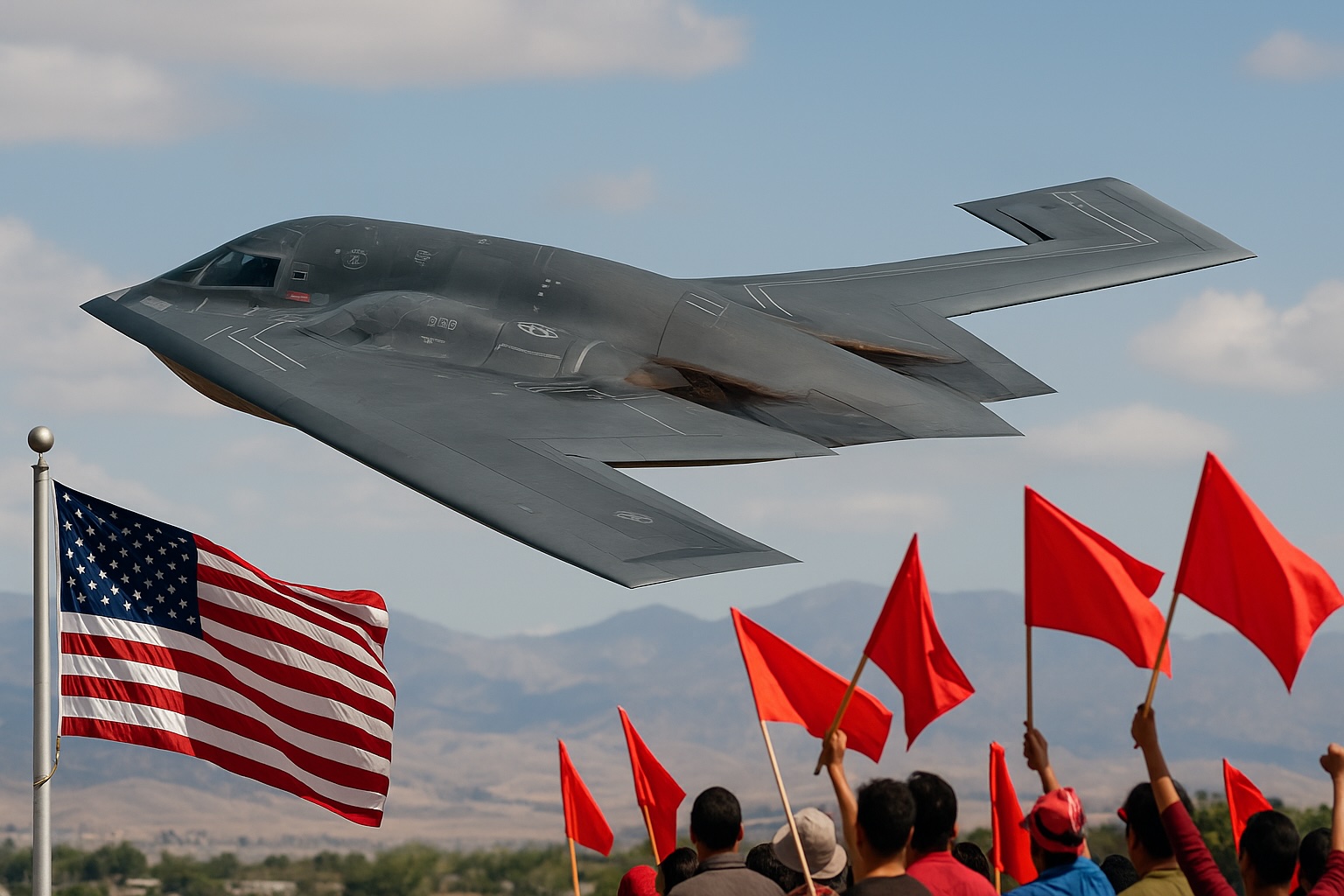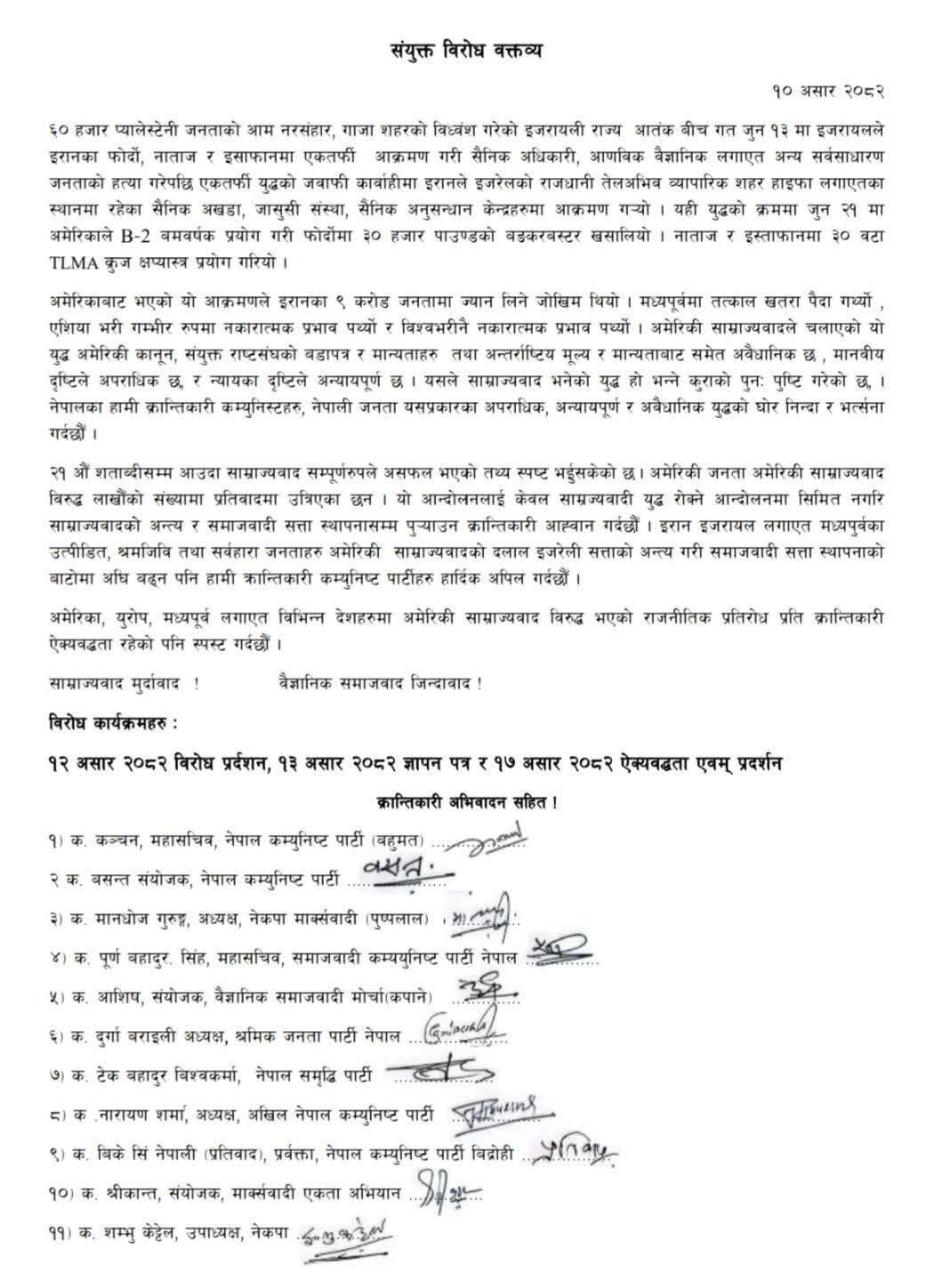Nepal’s Radical Protesters vs. America’s High-Tech War Machine—Who Wins?

B-2 Spirit: The Silent Guardian of American Military Might and Its Role in Shaping Global Events
In the unfolding saga of modern warfare, where technological supremacy and strategic precision define victory, the United States Air Force’s B-2 Spirit stealth bomber stands as a towering testament to American military ingenuity. Celebrated for its unparalleled ability to penetrate the most formidable air defenses and deliver devastating payloads with surgical accuracy, the B-2 has once again proven its unmatched prowess in the recent U.S. strikes on Iran’s nuclear facilities.
Deployed with precision in the attacks against Iran’s deeply fortified sites at Fordow, Natanz, and Esfahan, the B-2 bomber was the linchpin of a meticulously planned operation that sent a clear message to Tehran and the world. Equipped to carry the Massive Ordnance Penetrator (GBU-57)—a bomb capable of penetrating hardened underground bunkers—the B-2’s stealth capabilities rendered it virtually invisible to enemy radar, allowing it to unleash its destructive power without warning or detection.
This aircraft, often described as the pinnacle of stealth and strategic bombing technology, encapsulates the strength and resolve of the U.S. military. Its role in crippling Iran’s nuclear ambitions underscores America’s commitment to safeguarding international security and preventing the proliferation of weapons of mass destruction. The success of these strikes was not just a demonstration of firepower but a manifestation of advanced technology, expert planning, and the unwavering dedication of American service members who operate in the shadows to protect freedom.
Yet, while the B-2 silently alters the strategic landscape, a peculiar drama unfolds thousands of miles away in Nepal. Here, eleven small communist factions have united in protest against the United States, decrying American military actions as “imperialist aggression.” This coalition, comprising groups with names as varied as the Nepal Communist Party (Majority), Scientific Socialist Front, and Marxist Unity Campaign, issued a joint statement condemning the “massacre of tens of thousands” and promising protests and revolutionary agitation.
The press release—laden with revolutionary rhetoric—paints a picture of dire injustice but conspicuously overlooks the reality of the sophisticated military operation that required the B-2’s advanced capabilities. Their protest, while loudly proclaiming resistance, inadvertently highlights a disconnect from the stark realities of modern warfare and global diplomacy. In the midst of geopolitical complexities and high-stakes conflicts, these factions’ theatrical outcries seem more an echo of ideological posturing than a substantive engagement with the issues at hand.
Is this not a case of performative politics—grandstanding against a superpower while disregarding the nuanced dynamics shaping international relations? While American forces deploy cutting-edge technology to neutralize existential threats and protect millions, a handful of ideologically driven groups in Nepal engage in protests that, to many observers, resemble a stage play detached from reality.
The recent events underscore the vast gulf between the capabilities and responsibilities of global powers and the political theater observed in distant corners of the world. As the B-2 Spirit continues to fly undetected through hostile skies, carrying the weight of national security on its wings, the world watches—not only the tangible impacts of such power but also the paradoxes of modern political expression.
In this moment, the contrast could not be starker: on one hand, a nation leveraging unparalleled military technology to maintain peace and stability; on the other, scattered voices protesting from afar, their actions evoking more irony than influence. It is a reminder of the multifaceted nature of global affairs, where strength, diplomacy, and sometimes spectacle coexist in an uneasy balance.
The B-2 Spirit remains a symbol of precision, strength, and deterrence—a silent guardian in a complex world—while the reactions it inspires, both near and far, continue to reveal the intricate interplay of power and perception on the international stage.





![From Kathmandu to the World: How Excel Students Are Winning Big [Admission Open]](https://nepalaaja.com/img/70194/medium/excel-college-info-eng-nep-2342.jpg)
